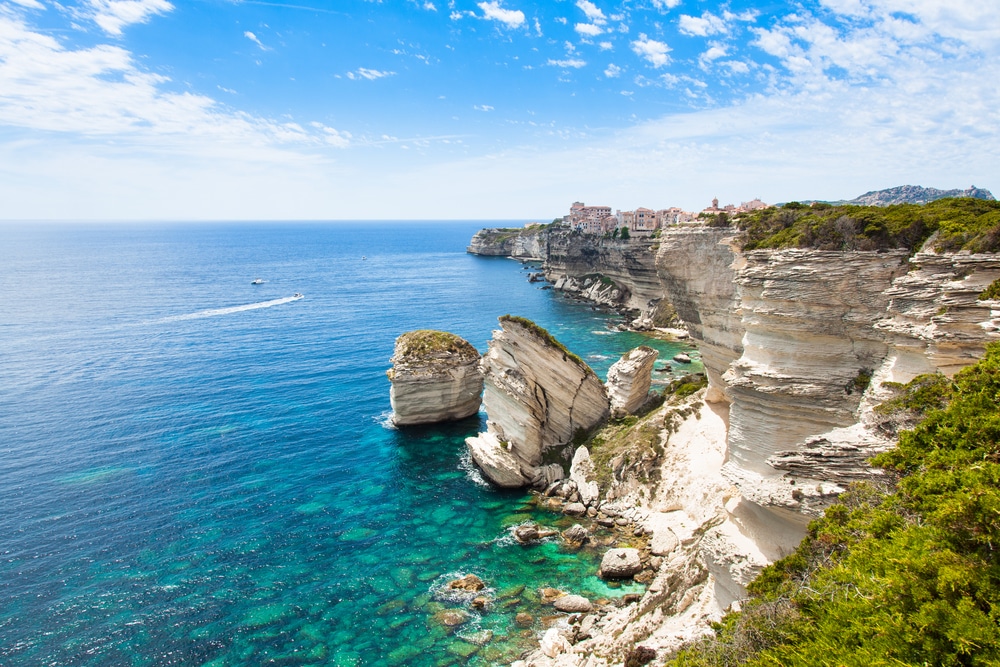The magic of Corsica was already known to the ancient Greeks, who gave the fourth largest Mediterranean island its name “Kallisté” – the beautiful. Mass tourism still does not exist on the island today. Most holidaymakers come to swim, hike or ski. High mountains, which rise up to 2,500 meters into the air, characterize the interior of the island. The approximately 325,000 inhabitants of Corsica speak the traditional island language Corsican. However, French is the official language in Corsica.
Port cities reminiscent of the Côte d’Azur
Wide boulevards reminiscent of the Cote d’Azur, a palm-lined waterfront promenade and Mediterranean flair characterize Ajaccio, the administrative center of Corsica and, with around 60,000 inhabitants, also the largest city on the island. The cosmopolitan island metropolis is the birthplace of Napoléon Bonaparte. The island’s most famous son is still omnipresent today. Napoleon Museum, Napoleon Grotto, Napoleon’s Birthplace and three heroic monuments commemorate the Corsica-born emperor and general. One of the most beautiful sights of the port city is the Notre-Dame-de-la-Misericorde Cathedral, built between 1587 and 1593, whose mighty dome and cruciform ground plan resemble the Byzantine architectural style. The Musée Fesch, the central art museum, houses a collection of important works of Italian painting from the 14th to the 18th centuries.
Coastal towns with a romantic old town
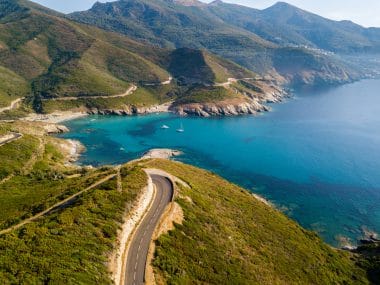
In the north of the island lies the coastal town of Saint-Florent with its romantic old town. The fine, long sandy beaches made the small village a popular holiday resort. Bonifacio is the southernmost city in Corsica and is located on a narrow promontory. On a high plateau above white limestone cliffs is the old town of Bonifacio. Located below the old town, the vantage point offers a breathtaking view on a clear day, reaching far across the Mediterranean Sea to the neighbouring island of Sardinia. The secret capital of Corsica is the small town of Corte, located in the heart of the island. The old town with the citadel is enthroned 400 meters high on a mighty rock. In the old town alleys with their small shops, boutiques and cozy restaurants, there is lively life, because Corte has the only university in Corsica and numerous students live in the cozy town.
Climbing and mountaineering in Corsica
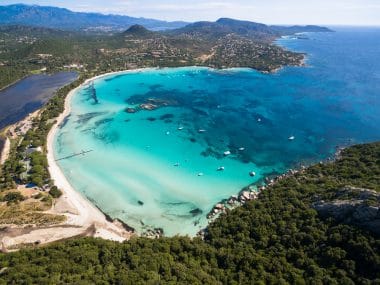
Corsica is an island with a rich variety of vegetation. The island consists of almost 86 percent mountains. The Mediterranean island is therefore considered an insider tip for short mountain trips and extended hiking tours. Climbers, mountaineers and hikers will find overnight accommodation in hostels and holiday apartments in the small mountain villages. There are also more than 200 campsites in Corsica.
Most of the towns and villages in the interior of the island are easily accessible for a day trip. The island is also called the “mountain range in the sea” because more than 50 peaks are higher than 2,000 meters. An extensive network of hiking trails with over 2,000 kilometres of hiking trails runs through the mountainous landscape of the island. The longest hiking route in Corsica is the 220-kilometre-long Grande Randonnée 20. The Corsican long-distance hiking trail connects the villages of Calanzana in the north and Conca in the south. The most famous hiking region in Corsica is the Restonica Valley, located near Corte.
White sand and turquoise waters, the most beautiful beaches on the island of Corsica
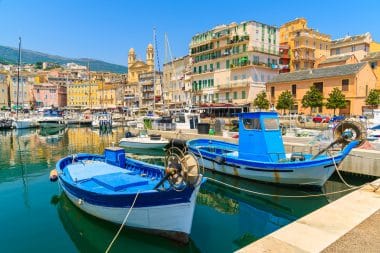
The coastal landscape of the island stretches for more than 1,047 kilometers. The most famous sandy beach is Palombaggia Beach in Porto Vecchio, surrounded by red rocks. White sand, turquoise waters as far as the eye can see and green pine forests in the hinterland make Palombaggia beach one of the most beautiful beaches in Corsica. Worth seeing is the black beach of Nonza, which is located in the north of the island and is one of the less visited beach sections. The black beach of di Nonza offers a unique spectacle of colours.
On one side, the view is immersed in the deep turquoise blue of the Mediterranean Sea, while on the shore, the black hue of the sand amazes the observer. Gently sloping beaches can be found in the five-kilometre-long bay of Calvi. Unpaved gravel roads lead to the snow-white sandy bay of Saleccia, which is surrounded by a protected natural landscape. The fine-grained sandy beach can also be reached by water on a boat trip from the resorts of Ile Rousse and Saint Florent in the high season.
Corsican cuisine: rustic and rich
Rustic and hearty – Corsica’s cuisine still has this reputation today. The islanders love it down-to-earth. Sausage specialties such as Sangui (black pudding) are served. Sausages and meat products are usually refined with Corsican mountain herbs. A special flavour is provided by the herbs of the maquis such as basil, thyme, rosemary, marjoram and myrtle, as well as wild cultivations that give the dishes their typical aroma. Among the meat and sausage specialties of the Mediterranean island are Figatellu, a smoked raw sausage made from liver, the sirloin Lonzu and Coppa, which is reminiscent of a rolled roast. Culinary experiences include the buttery soft ham Prisutu, grilled bacon panzetta, goat ham Caprettu or lamb ham (Agnellu) made according to traditional methods.
All cheese? Popular cheeses from Corsica
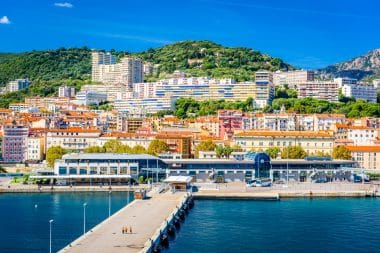
Corsica is home to many types of cheese. Brocciu, a sheep’s or goat’s cheese, is also used as a filling for dishes such as ravioli, beignets (doughnuts) and tartes (tartlets) or eaten as a brocciu omelette with peppermint. When matured, the popular cheese is available as the spicy variety Vieux Brocciu. The best goat’s or sheep’s cream cheese is made in Corsica between Easter and All Saints’ Day. During this time, the animals mainly get to eat young grasses and herbs, which ensure that milk and cheese become particularly spicy with their aromas. The national dish of Corsica is pulenta. The porridge made of water and chestnut flour is eaten at any time of the year. Usually wild boar liver or figatellu is served with pulenta.
Cap Corse: a very special aperitif
A delicious aperitif is always part of a good meal in Corsica. More than 100 years ago, the Corsican Louis Napoleon Mattei created the “Cap Corse” from muscat wine and quinquina (cinchona bark). The special herbal recipe contains other plants in addition to cinchona bark. Cap Corse owes its distinctive, tart aroma to the extracts of the cinchona tree. The headquarters of the liquor merchant Mattei is located in the town of Bastia on Place Saint Nicolas and is also worth seeing because of the shop furnishings, which are designed in the style of a colonial goods store. However, the production of the first Corsican beers did not begin until 1995. Pietra beer differs from traditional beers by the addition of chestnut flour, which is added before fermentation.


